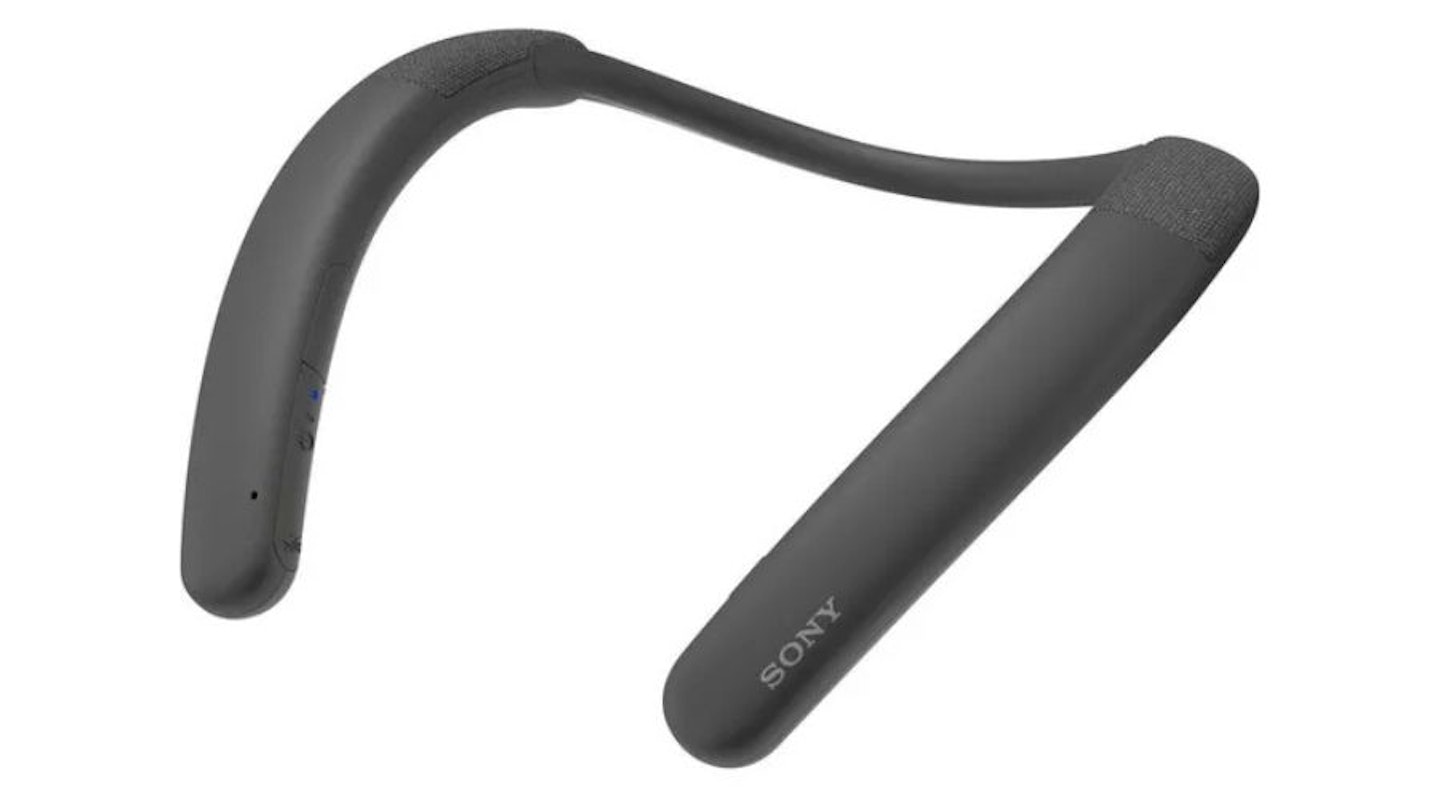For those wondering about the appeal of a device like the Sony Bravia Theatre U, we had the same question at first. A home cinema speaker around your neck rather than a pair of surround sound headphones – why? But after a few weeks with this interesting piece of audio tech, we were hooked.
If you want to step up your sound this is a fantastic, accessible way to get Dolby Atmos-level audio. Full-sized soundbars and subwoofers can be pricey and take up space (the Bravia Theatre 8 is huge), but this offers a portable, affordable option without compromising on quality.
Connect it to your TV, binge your favourite shows, dive into a quick gaming session, or boost your smartphone audio – all without worrying about disturbing others. It's not completely silent to those asleep or in adjacent rooms, but it leaks far less sound than its TV speaker alternatives. Perfect when the discussion over which film to watch ends in disagreement – fire up the Theatre U and settle in for your own personal movie night.
1.
Sony Bravia Theatre U Wireless Neckband Speaker
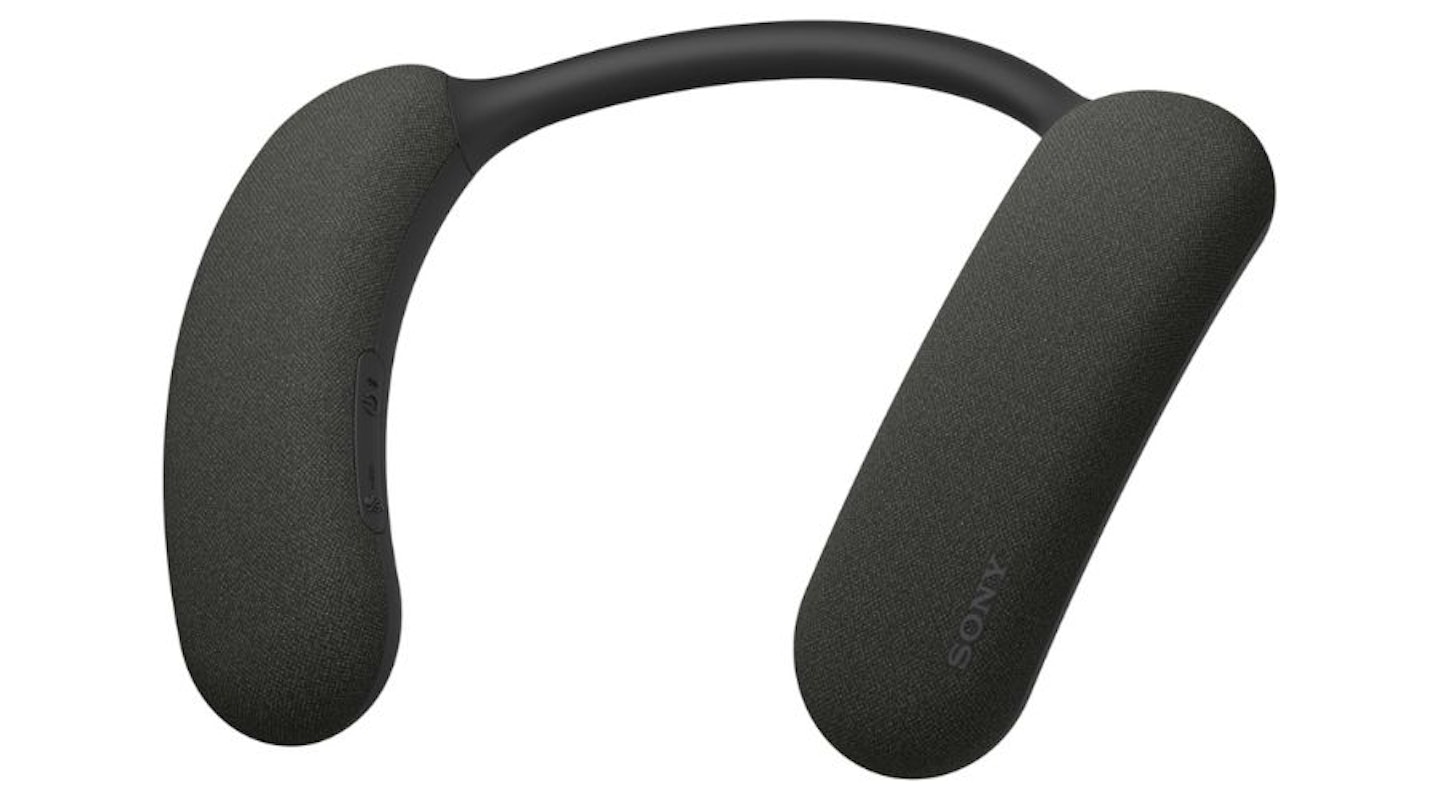 Sony
SonyPros
- Dolby Atmos in a portable, lightweight, wearable package
- Seamless connectivity with TVs, smartphones, and tablets
- 12-hour battery life keeps you bingeing without interruption
Cons
- We think the bass is solid, but it's not a replacement for a dedicated soundbar
| Drivers | 44 x 32 mm full range x 2 |
| Audio power | 200W |
| Connectivity | Bluetooth 5:2 |
| Ports | USB Type-C x 1 |
| Battery life | Up to 12 hours |
| Charging time | 4 hours |
| Waterproofing | IPX4 |
| Dimensions | 235 x 48 x 178 mm |
| Weight | 270kg |
What's in the box?

The device includes a dedicated audio adapter and a USB Type-C cable for charging. Some additional documents will guide you through the setup process, but it's pretty straightforward.
Connecting via Bluetooth is as easy as pairing AirPods. That said, linking it to a Bravia TV, like the Sony Bravia 8 we've tested, takes a few extra steps: a QR code, an app download, and, oddly enough, photographs of your ears for "personalised" sound distribution.
Once initially set up, it connects smoothly with tablets, smartphones, and other Bluetooth devices. For TVs, the sound plays through your speakers instead of those built-in – perfect for late-night watching without disturbing others.
Design and build
Smaller than expected and prone to sliding forward, the Theatre U takes some getting used to. Rather than resting on your shoulders – it's too small for that – it cups the sides of your neck. But, at a mere 27 grams, it's light and never a strain. You'll quickly forget it's even there. The materials, too, feel premium, and the cushioning on the underside of each speaker is comfortable.
It's perfect for walking around the house, whether grabbing a drink after pausing a film or checking something on a smartphone. Just be careful you don't lean too far, as it could slip off. The flexible band connecting the speakers allows them to bend towards each other, making the already compact design even easier to pack should you take it on a getaway. Its horseshoe shape also helps it fit into awkward suitcase spaces, while the sleek design means it looks nice sitting on a table or cabinet when not in use.
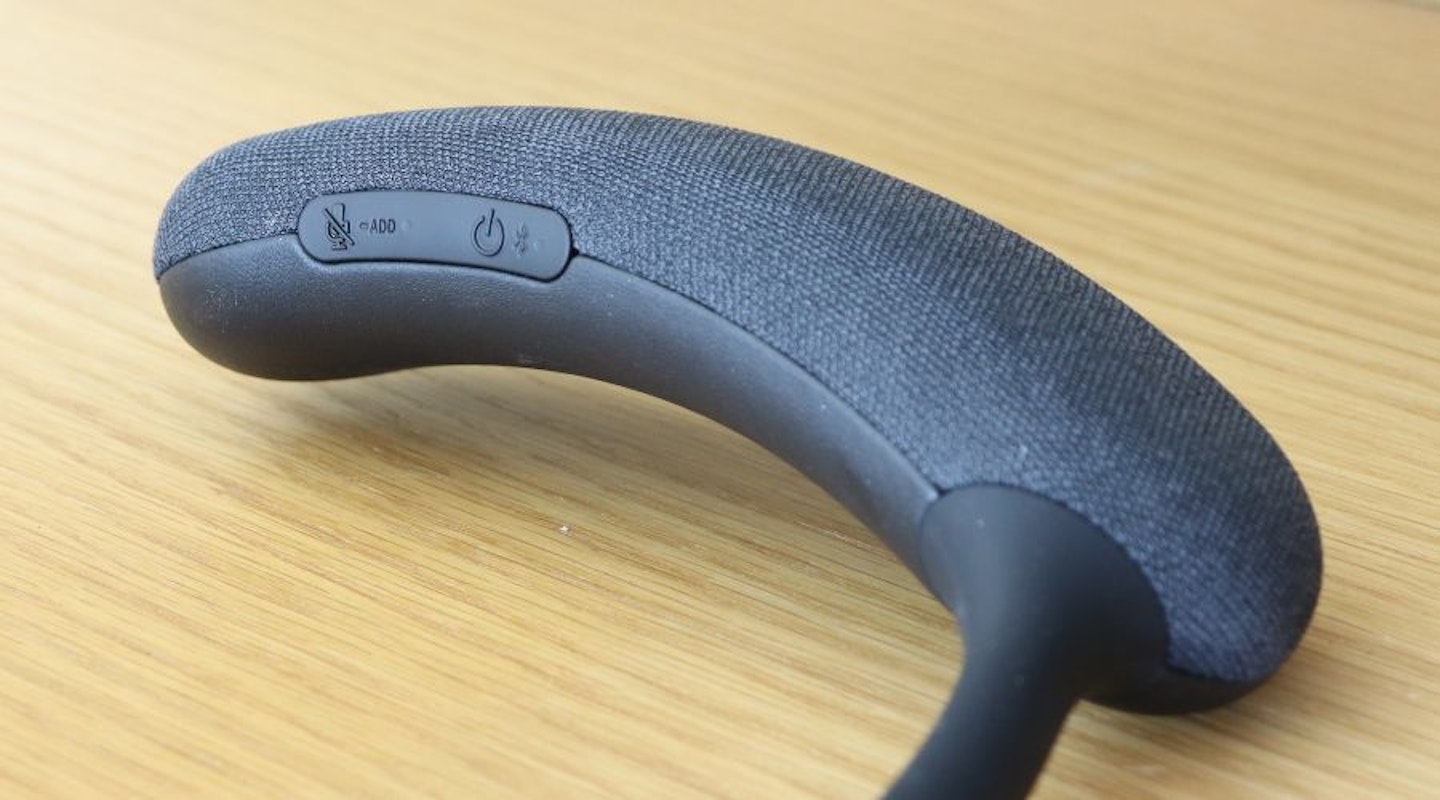
Controls
The button interface is straightforward, albeit awkward to use. Two volume buttons are tucked away on the left speaker (facing the neck), while the right speaker houses the power and audio controls. To connect, hold down the power button until the "pairing" command plays. For TV setup, scan the QR code inside the box for a direct link. Once connected, pairing via Bluetooth is as simple as selecting any Bluetooth device. However, with Sony prioritising portability, the button placement is tricky to use while wearing it – finding the right one can be a faff. That said, given the compact design, this is somewhat inevitable.
Performance
We put the Theatre U through its paces with a wide range of media on multiple devices. From Karyn Kusama's The Invitation on a Sony TV to Peter Berg's Deepwater Horizon on an iPad, a Mad Men binge on a laptop, and Alex Garland's The Beach on audiobook – it handled everything seamlessly. In Deepwater Horizon, the dialogue stayed clear above the oil rig's roar and building score, something lesser models often struggle with.
Dolby Atmos on Apple Music sounded rich, with great layering and object placement. Bass-heavy tracks were impressive for such a small speaker set, but don't expect it to compete with a dedicated soundbar or subwoofer. To test its power, we queued up The Batman's Iceberg Lounge and car chase sequences, and the Theatre U handled the volume without veering into harshness or losing precision. Every detail – muffled voices, revving engines, thunderous explosions, and pelting rain – came through cleanly and with solid separation.
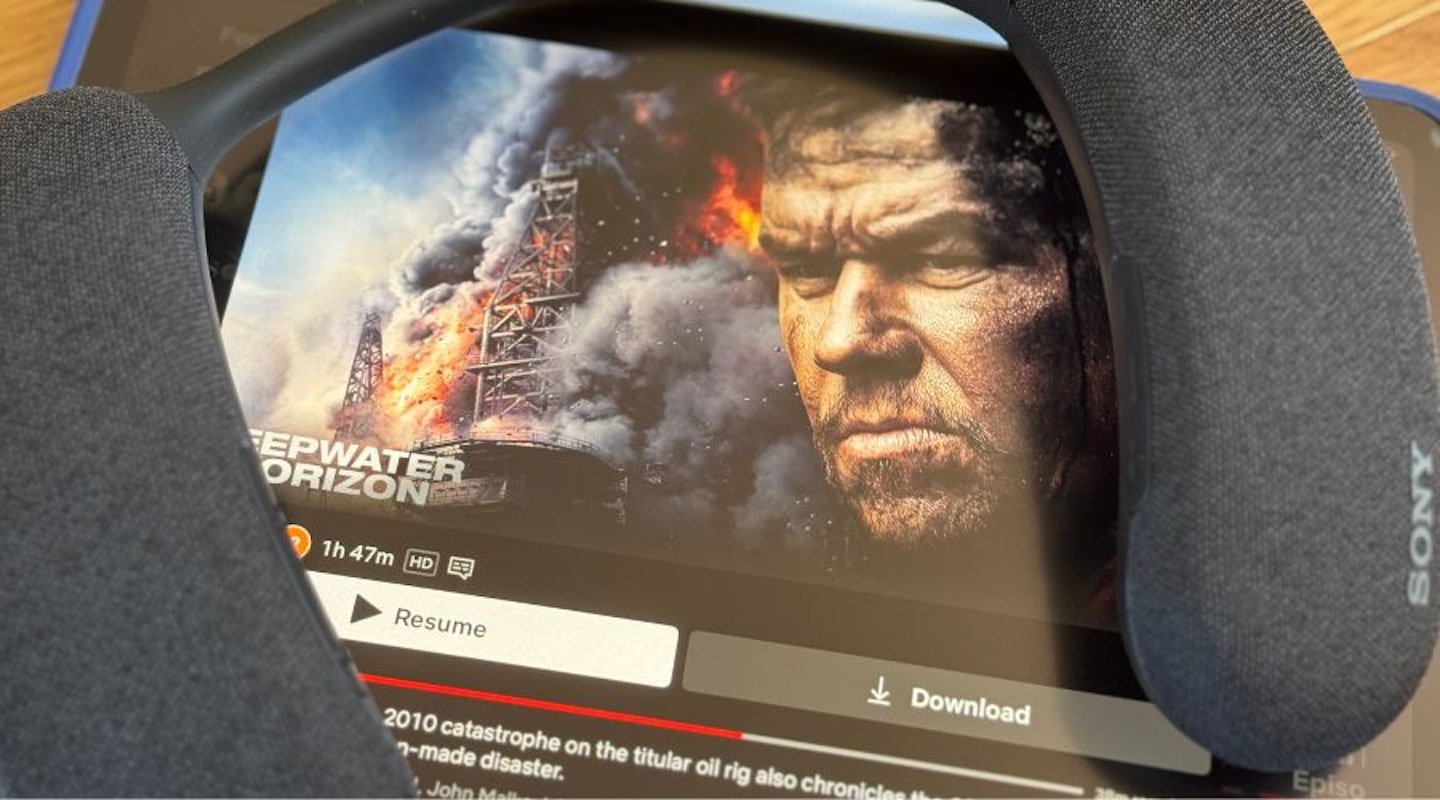
Battery life
Sony claims the Theatre U offers up to 12 hours of playtime – and it delivers. We watched three films and about five and a half episodes of television (Adolescence, Severance) before the battery gave out. And with a full recharge taking just four hours, it's a clear win on the battery front.
Price and competition
Finding a true rival to the Bravia Theatre U is no easy feat. Aside from Sony's own SRS-NS7 and SRS-NB10, few alternatives deliver this level of performance at such an accessible price. The Theatre U is a clear step up from both, and high-quality neckband speakers with Dolby Atmos support are rare. Panasonic does offer the SC-GNW10E Wearable Gaming Speaker, but like most alternatives it's geared primarily towards gamers.
For Atmos-level performance and home theatre power, the Theatre U seems to be the best option out there. It works just as well for gaming as it does for movies, if not more so. We tested Indiana Jones and The Great Circle on Xbox, and it was an absolute blast. Likewise, the Panasonic SC-GNW10E costs over £50 more (at the time of writing). So, it's pretty hard to beat.

Who is it for?
If you want great sound quality but don't have the space or budget for a full setup, the Sony Bravia Theatre U is a fantastic, affordable way to experience Dolby Atmos. It levels up mobile audio, and for TV viewing, it delivers a cinematic feel while keeping noise leakage low, so you won't disturb anyone, whether they're in the next room or beyond.
One of the best things about having this device is the late-night TV series marathons we've managed to squeeze in without a single noise complaint. Thanks to how the speakers angle and surround the wearer, sound leakage is pretty limited, even for someone sitting across the room. At lower volumes, it's barely noticeable. That said, crank it up for an intense action sequence, and the sound does travel – still quieter than a soundbar, but there's definitely a difference.
Would we recommend it?
For immersive audio without the bulk of a full setup, the Theatre U is a standout choice. Perfect for gamers, cinephiles, series bingers, or anyone looking to elevate their smartphone audio, it delivers compact, high-quality sound. Testing it was a pleasure, and it was hard to let it go.
Alternatives to the Theatre U
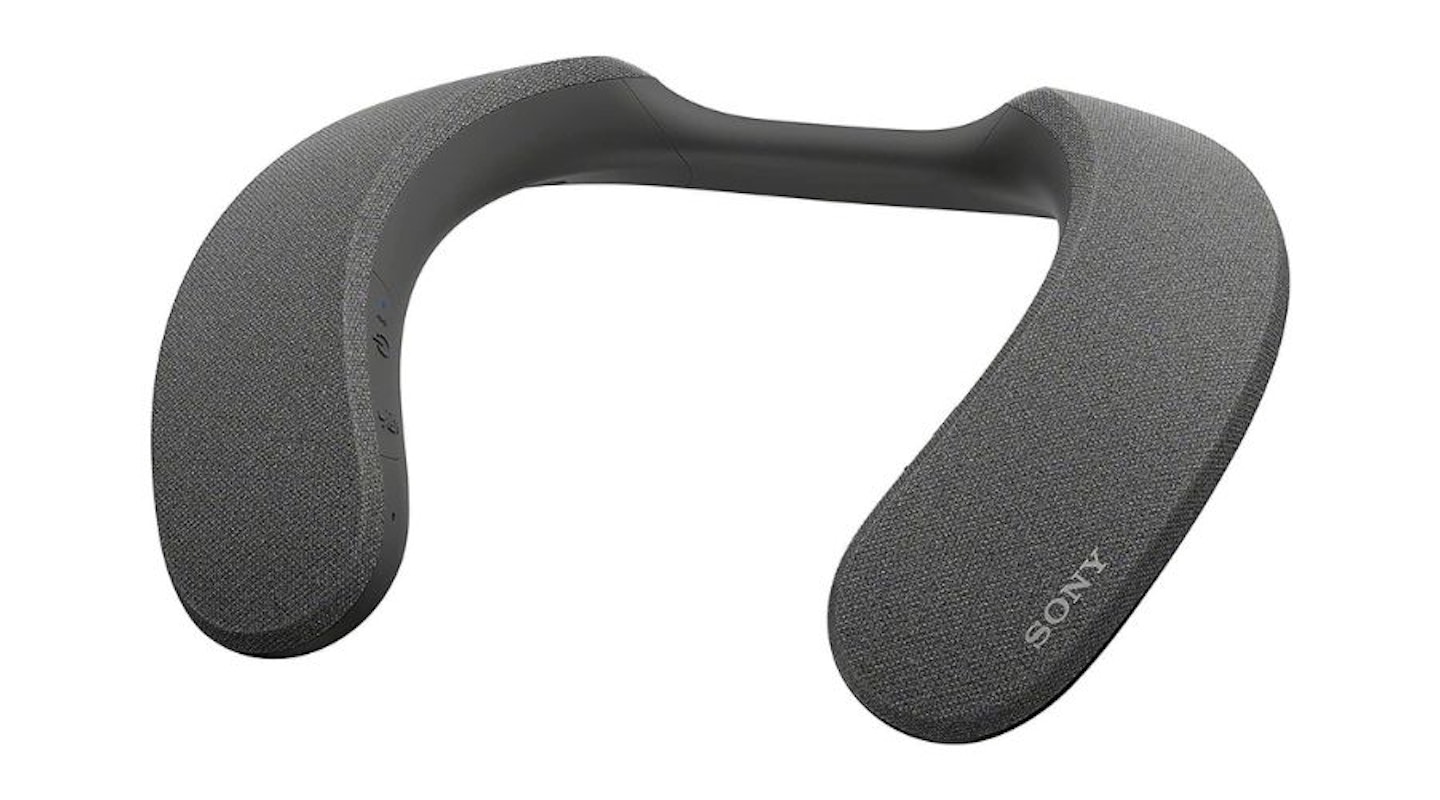 Sony
SonyThe predecessor to the Theatre U, the SRS-NS7 offers personal cinema with no strings attached. Wrapping you in immersive Dolby Atmos surround and pairs with BRAVIA XR for omnidirectional Spatial Sound. Lightweight and built for comfort, it's the perfect companion for movies, music, and work calls.
Pros
- Rich Dolby Atmos for personal cinema
- Pairs with BRAVIA XR for Spatial Sound
- Lightweight and comfortable for extended sessions
Cons
- It doesn't compete with the Theatre U
| Drivers | Unspecified |
| Audio power | 400W |
| Connectivity | Bluetooth |
| Ports | USB Type-C x 1 |
| Battery life | Up to 12 hours |
| Charging time | 4 hours |
| Waterproofing | IPX4 |
| Dimensions | 470 x 620 x 135 mm |
| Weight | 261g |
Works calls, music, and everything in between – all without the bulk of headphones. The SRS-NB10 feels comfortable on your shoulders and is lighter than the Theatre U. It delivers crisp audio while keeping you aware of what's going on around you. 20 hours of battery life, rapid charging, and a lightweight design, it's an excellent alternative for casual, all-day wear. Just don't expect strong bass.
Pros
- Comfortable and featherlight
- 20-hour battery life with fast charging
- Sleek, premium-feeling design
Cons
- Underwhelming bass for watching movies
| Drivers | Passive bass radiators |
| Audio power | Unspecified |
| Connectivity | Bluetooth 5:1 |
| Ports | USB Type-C x 1 |
| Battery life | Up to 20 hours |
| Charging time | 4 hours |
| Waterproofing | IPX4 |
| Dimensions | 70 x 160 x 70 mm |
| Weight | 113g |
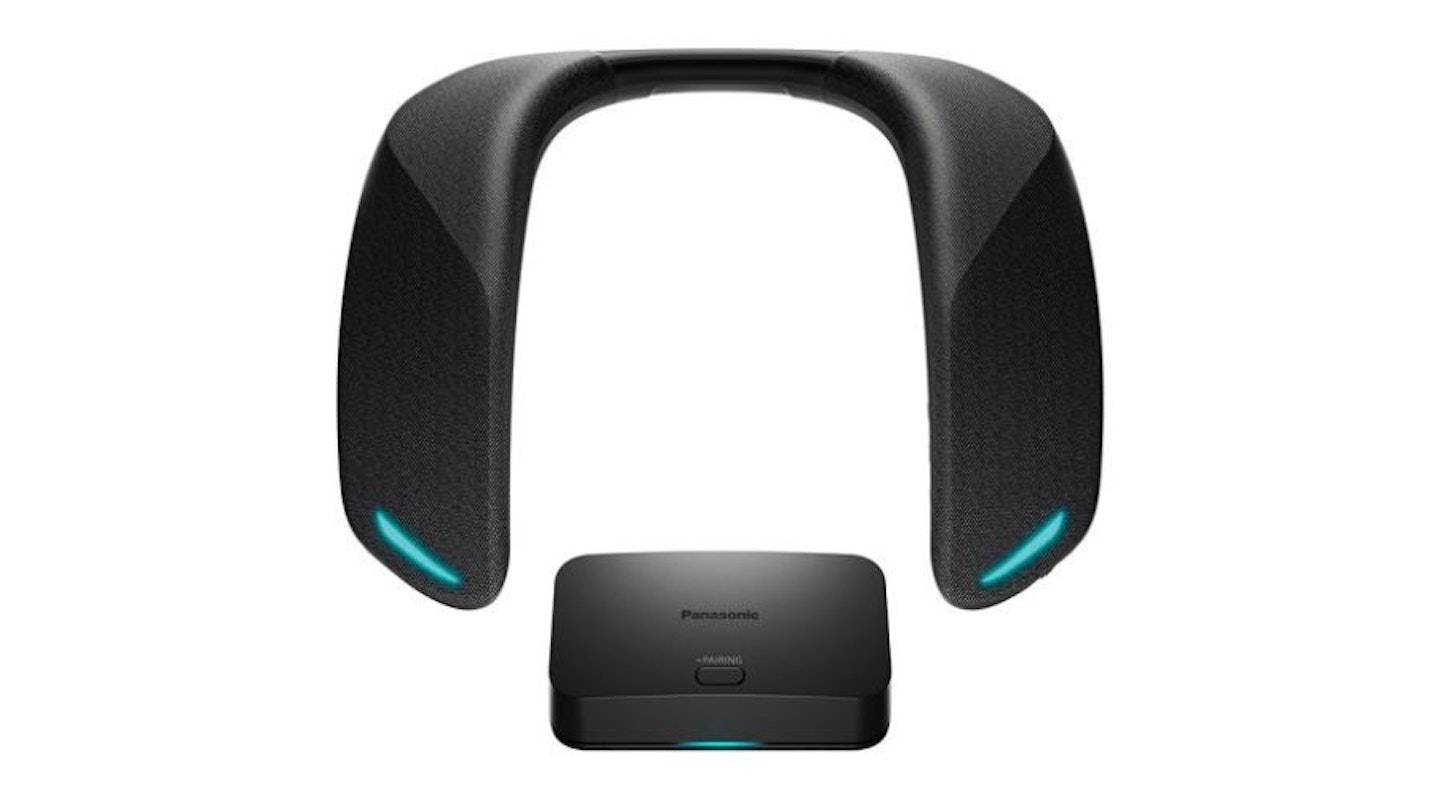 Panasonic
Panasonicstore.panasonic.co.uk
Ditch the headset and keep the immersion. The SoundSlayer GNW10 envelops you in 3D gaming audio with four precision-tuned speakers. Its low-latency wireless keeps you smooth and in sync, its AI-powered mics keep your voice clear when chatting online, and its flexible fit promises all-day comfort. Somewhat pricey, it's got you covered for hassle-free, high-performance sound.
Pros
- Four precision-tuned speakers for 3D immersion
- Low latency for smooth performance
- AI-powered mics for precise, responsive voice chat
Cons
- Higher price compared to other speakers
| Drivers | Unspecified |
| Audio power | 8W |
| Connectivity | Unspecified |
| Ports | USB Type-C x 1 |
| Battery life | Up to 9 hours |
| Charging time | 4 hours |
| Waterproofing | Unspecified |
| Dimensions | 256 x 56 x 221 mm |
| Weight | 403g |
How was the Sony Bravia Theatre U tested?
We tested the Bravia Theatre U neckband speaker for several weeks with a Sony TV, smartphone, tablet, and laptop. We used it to stream movies and TV shows, listen to audiobooks and podcasts, and game with an Xbox Series X.
To assess Dolby Atmos surround sound and dialogue clarity, we watched a range of content, including Mad Men, Adolescence, Severance, The White Lotus, and a rewatch of Karyn Kusama's The Invitation and Peter Berg's Deepwater Horizon. For audio, we listened to Alex Garland's The Beach audiobook and Hurry Up Tomorrow by The Weeknd.
The speaker was a solid upgrade for personal audio, making YouTube and music sound less harsh than over-ear headphones or earbuds – our preferred method. All in all, we had it on pretty much 24/7, seamlessly fitting into our daily routine.
Harvey Isitt is a Tech Writer and Reviewer for Empire, What's The Best, and other brands. He specialises in soundbars, speakers, TVs, cameras, and home cinema setups – if it makes your movies look or sound better, he's tested it. From Dolby Atmos sound systems to multi-room audio, he's all about finding the best setups for film lovers.
Besides reviewing tech, Harvey is a devoted cinephile with an ever-growing movie collection and a borderline reckless number of streaming subscriptions. He runs @filmsyoushouldbewatching on Instagram, where he shares film recommendations with over half a million followers.

